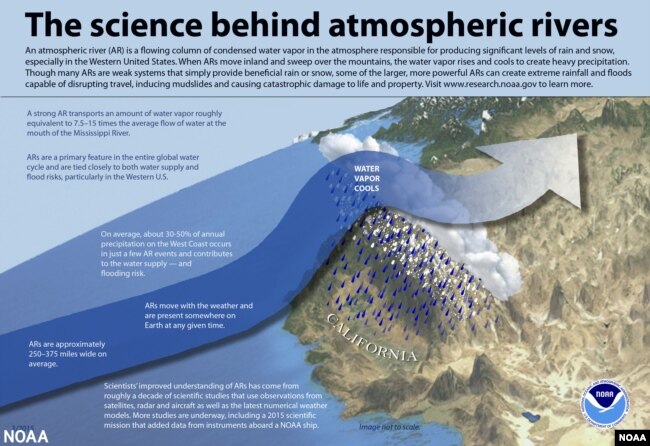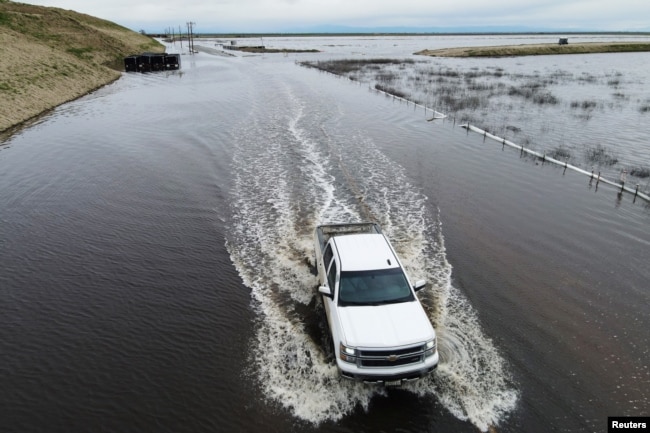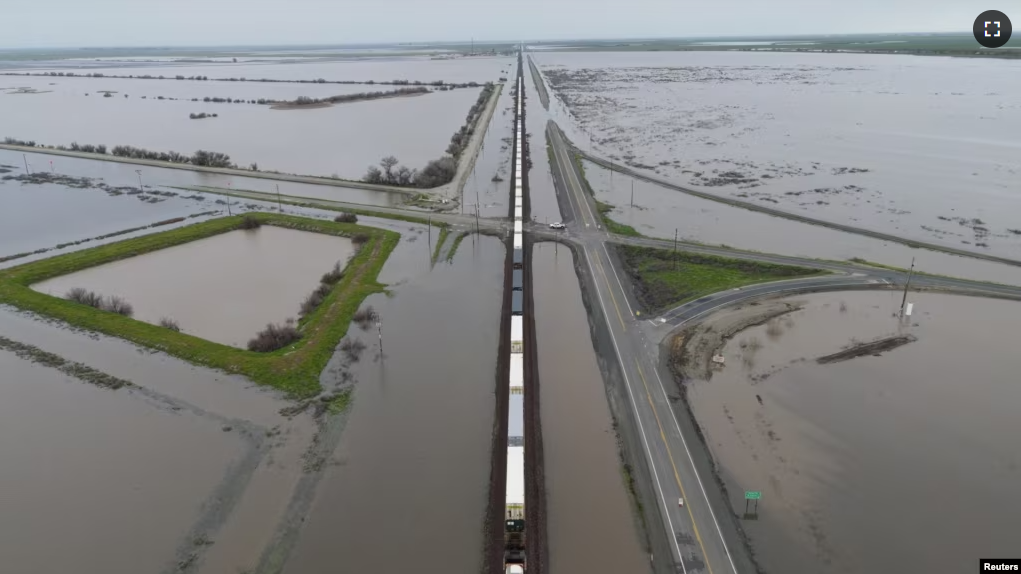A rare tornado touched down near Los Angeles on Wednesday. It followed another major storm that hit the state of California on Tuesday.
The violent weather brought heavy rain and snow from the Pacific Ocean. It caused floods, moved earth, uprooted trees, and forced thousands of Californians to leave their homes.
The National Weather Service said Tuesday’s storm was a weather system connected to the 12th so-called atmospheric river since late December.

Atmospheric rivers
Atmospheric rivers are long and wide areas, like a river, of water vapor in the atmosphere that forms over an ocean.
The National Oceanic and Atmospheric Administration says these weather systems carry as much water vapor as the average flow of water at the mouth of the Mississippi River. When atmospheric rivers make landfall, they often release this water vapor in the form of rain or snow.
Atmospheric rivers come in many shapes and sizes. The largest of those can create strong winds and can cause extreme rainfall and floods. They can cause large amounts of damage to property and life.
But atmospheric rivers are an important part of the world’s water cycle. In the western part of the United States, they bring snow to the Sierra Mountains in the winter. The snow then melts and releases water in the spring and summer for power, farming, and drinking water for millions of people.

Storm effects on California
The Tuesday storm arrived on the second official day of spring.
The National Weather Service office in the San Francisco area wrote, “Wow. Even by the standards of what has turned out to be one of our most extraordinary winter seasons in a very long time, yesterday … stands out.”
In the San Francisco area, windows were blown out from two tall buildings in the city. A train carrying 55 passengers struck a downed tree and derailed near the village of Porta Costa.
Parts of California had winds of 97 to 113 kilometers per hour. Officials confirmed five deaths related to the storm when trees fell onto their vehicles and a tent.
California Office of Emergency Services said more than 14,000 people statewide were under orders to find higher ground because of flooding. Evacuation warnings were issued for another 47,000 Californians.
PowerOutage.us found nearly 250,000 homes and businesses were without electricity statewide.
The repeated Pacific storms during the past three months, however, have brought much-needed snow and water to California after years of dry weather and wildfires.
The state’s Department of Water Resources says California has now received 147 percent of average rainfall so far this season.
I’m Gregory Stachel.
Gregory Stachel adpated this story for Learning English with reporting from Reuters and The Associated Press.
____________________________________________________________________
Words in This Story
tornado – n. a violent and destructive storm in which powerful winds move around a central point
vapor – n. a substance that is in the form of a gas or that consists of very small drops or particles mixed with the air
cycle – n. a set of events or actions that happen again and again in the same order
wow – intj. used to show that you are very surprised or pleased
derail – v. to leave its tracks
tent – n. a portable shelter that is used outdoors, is made of cloth (such as canvas or nylon), and is held up with poles and ropes
